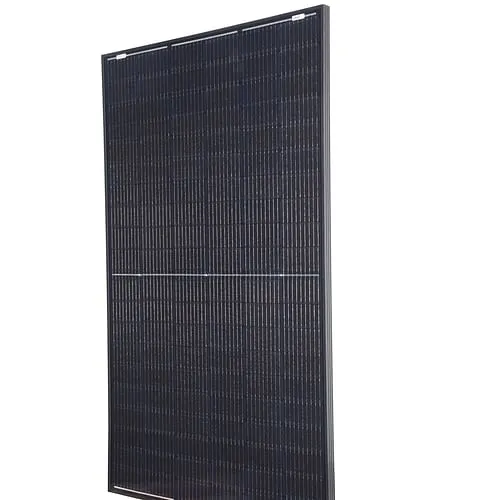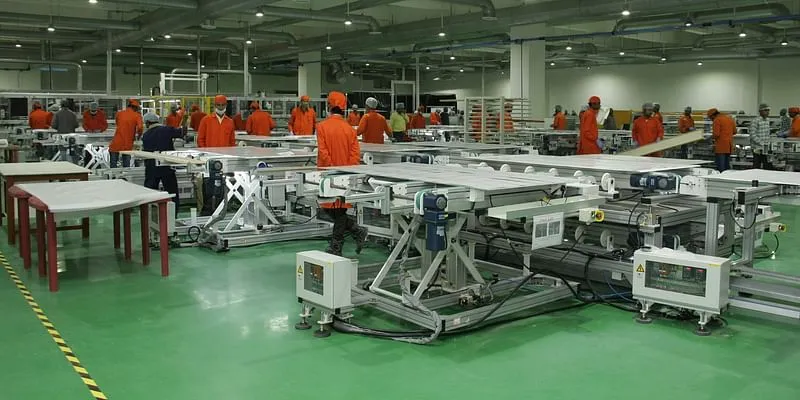How this entrepreneur built Vikram Solar, which is now making Rs 1,975 Cr annual revenue
In 2006, Gyanesh Chaudhary started Vikram Solar as a solar module manufacturing unit. After a national mission to increase the country’s solar capacity was launched, Vikram built for India and scaled it into a leading solar module, plant, and EPC business.
In 2010, when the Jawaharlal Nehru National Solar Mission was inaugurated, it sought to achieve 20 GW of solar capacity in India by 2022.
Although the target was increased significantly later on, the mission initially provided an impetus for India’s nascent solar industry and the manufacturing firms involved.
One such company - - was into manufacturing solar modules for international markets. But the national mission came at the right time for it to start focussing on large scale solar production for the Indian market.
Vikram Solar was started in 2006 by Gyanesh Chaudhary, part of the business family running the Vikram India group in Kolkata.
Gyanesh, who is MD at the firm, tells SMBStory:
“When I first launched Vikram, solar was not understood well at all. I had to explain to people what I did on a day-to-day basis, and show them how energy can be captured from the sun. But ever since the Jawaharlal Nehru National Solar Mission came in, we found ourselves right in the middle of building capacity and scale for the domestic market.”
Since then, Vikram Solar has grown into one of the nation’s leading solar module, solar plant and engineering, procurement and construction (EPC) companies.
It claims to have installed and commissioned over 1.3 GW of solar projects across India, and built its capacity to 3 GW through two manufacturing units (one in West Bengal and the other in Tamil Nadu).
This capacity places it right at the top alongside the likes of Waaree, Tata, etc. As a solar EPC solutions provider, it also installs and commissions solar projects worldwide.
As per a Fortune India report, its total revenue in 2020 was Rs 1,975 crore.

Vikram Solar's Somera series solar panel
The early days of Vikram
When Gyanesh first launched Vikram, he didn’t envision it would scale these heights. In the early days, it was all about investing in an emerging technology and getting a feel of the developing market.
In fact, Gyanesh was trying his hand at different businesses managed by his family before moving to solar.
He says, “In our family, we go through a sort of training where we work in engineering, textiles, exports, and other businesses. I did the same, but I realised those businesses, especially the engineering one, was running smoothly even without my help. We also tried running a steel plant in Odisha, but had to sell it due to some bureaucratic challenges.”
His days at the steel plant helped Gyanesh learn the tricks of the trade in setting up and running a manufacturing plant, and was able to leverage this experience when the idea for starting a solar business came into the picture.
“I explored the concept of solar energy and a solar business for a year or two, visited trade shows, went to seminars, etc. This way I figured out that getting into solar module manufacturing, back in 2007, would be a good entry point,” he says.
But the first four years were arduous. Only a few countries around the world such as Spain and Germany were commissioning solar projects, according to him, and a JV between Vikram and Spanish company Proener helped Gyanesh learn more about setting up small solar plants.
Having set up a few projects in India, Vikram found itself at the right place at the right time when the national solar mission started picking momentum.
“The ticket sizes for solar installations were increasing, and their costs were reducing. Proener then did not go ahead with further investment, so we bought over and integrated their side of the EPC business. This primed us to build solar capacity for the Indian market through modules, plants, and EPC projects at scale,” Gyanesh says.
Chinese competition and other challenges
Over the years, solar and project developers in India began importing solar modules, panels, etc., from China as the marginally-lower cost of Chinese products made a big difference at scale.
This way, competition from China emerged as one of the major considerations when setting up or scaling an Indian solar business. But Vikram Solar, Gyanesh claims, was not rattled too much by this competition.
“One way to look at China is like a giant you need to fight. But we looked at it another way - become a giant ourselves and imbibe best practices, which would help us become a market leader amidst the noise,” he says.
The business put this notion to the test by successfully executing a wide number of solar projects across Uttar Pradesh, Andhra Pradesh, Madhya Pradesh, Gujarat, Haryana, and other states. It also supplied modules for solar projects in the US.
Another challenge Gyanesh had to address was a perception he noticed that West Bengal-based firms are seen as lacking in growth or new initiatives.
“Being based in Kolkata did not stop us. We took decisions to achieve scale, optimise operations, and believe in the larger solar industry - which was much bigger than the self, and were able to grow to the extent we did,” he adds.

Inside Vikram Solar's manufacturing unit
Future plans amidst a growing solar market
Gyanesh admits Vikram is still small in comparison to the investment in solar that is possible by the likes of the Adanis, Tatas, and Ambanis. According to him, Vikram can only focus on doing what it does best within its means.
“I also believe that there is enough for everyone to work in this space and also collaborate with each other. When COVID-19 hit, the first quarter of FY21 was impacted severely, but after that, we saw growth, which enabled us to reach the previous year’s annual revenues,” he says.
In line with this, the overall solar market in India saw an addition of 4,578 MW (or 4.58 GW) of solar in H1 2021, exceeding the 3.2 GW of solar installed in all of calendar year 2021 - as per Mercom India Research's report Q2 2021 India Solar Market Update.
The higher number of recent installations are attributed to the Indian solar industry being more prepared for business during the second lockdown than they were during the first. The solar industry also saw the increase in installations despite state-level lockdowns amidst the second wave of COVID-19.
Now, besides Reliance planning to set up an integrated solar PV unit among plans to set up four giga factories, other players like Waaree, Vikram Solar, and Gautam Solar are looking at expansion.
Gyanesh says, “We have big plans and we feel we can reach a billion dollars (over Rs 7,000 crore) in three years as there is a lot of excitement around renewables, especially solar. As the world recognises the importance of solar in the fight against climate change, India is poised to become a forerunner in this battle. This makes us excited for what lies ahead."
YourStory’s flagship startup-tech and leadership conference will return virtually for its 13th edition on October 25-30, 2021. Sign up for updates on TechSparks or to express your interest in partnerships and speaker opportunities here.
For more on TechSparks 2021, click here.
Applications are now open for Tech30 2021, a list of 30 most promising tech startups from India. Apply or nominate an early-stage startup to become a Tech30 2021 startup here.
Edited by Megha Reddy











